You are using an out of date browser. It may not display this or other websites correctly.
You should upgrade or use an alternative browser.
You should upgrade or use an alternative browser.
What is Thermodaynamics: Definition and 151 Discussions
No Wikipedia entry exists for this tag
-
A
Can Quasi-Equilibrium Processes Accurately Measure Changing System Properties?
I am self studying thermodynamics and I stumbled upon the concept of a quasi-equilibrium process which I don't fully understand but here are my thoughts, Equilibrium is a condition of balance characterized by the absence of driving potentials and at such conditions you can measure properties...- AAMAIK
- Thread
-
- Tags
- Process Thermodaynamics
- Replies: 7
- Forum: Materials and Chemical Engineering
-
L
Thermodynamic Systems - Volume, Final Pressure and Final Temperature
Mass = 0.12kg Initial temp = 500°c = 773K Initial pressure = 0.8 MPa = 800,000 Pa Final volume = 90L R = 287 Jkg^-1K^-1 1) Initial Volume V=mRT/P 0.12 x 287 x 773 / 800,000 = 26,662.12m^3 2) Final Pressure P2 = P1P2^1.2/V2^1.2 800,000 x 26,662.12^1.2 / 90 = 1,816,095,330 Pa = 1,816 MPa 3)...- Lewishio
- Thread
- Replies: 4
- Forum: Engineering and Comp Sci Homework Help
-
Melting of substance with -ve slope for fusion curve
The question says that the process is melting, so temperature must increase. Hence, Delta T > 0. Also, it is given that the slope for its fusion curve is -ve, which means that as we increase temperature, the pressure will decrease. So, Delta P < 0. The question asks to prove that the substance...- Parzeevahl
- Thread
- Replies: 1
- Forum: Introductory Physics Homework Help
-

Understanding q: Why does dqsurr = -dqsys?
The question is: why ##dq_{surr}=-dq_{sys}##? q=heat, surr=surroundings, sys=system. Is there any simple way to understand this?- santimirandarp
- Thread
-
- Tags
- Energy Heat Thermodaynamics
- Replies: 15
- Forum: Thermodynamics
-
J
Work and Internal Energy for Adiabatic Processes
Using (2) on (1) give ## dU = -dW##... (4) A.For expansion since the gas goes from ##(P_1, V_1, T_1)## to ##(P_2, V_2, T_2)##, does this imply ##T_1 \leq T_2 ##? B. If so, then ##W## for adiabatic expansion would be negative (using (3))? Using negative ##dW## in (4) gives us a positive result...- JC2000
- Thread
- Replies: 4
- Forum: Introductory Physics Homework Help
-
V
I Understanding q: Lambda & S in the Equation
What is this formula? q=λ⋅S⋅∪_x What does s and lambda mean?- velfr
- Thread
-
- Tags
- Lambda Physic Thermodaynamics
- Replies: 3
- Forum: Other Physics Topics
-
T
B Temperature regulation in Earth orbit
If I had an object in an orbit around the Earth that I kept continually shaded from the sun, how cold would it get? Assuming the shade device was not physically connected to and was sufficiently far away from the object to not radiate any heat to it. And if I actively adjusted how much shade...- Treva31
- Thread
- Replies: 9
- Forum: Astronomy and Astrophysics
-
C
What is the intuitive meaning behind the polytropic process.
What does it actually mean from an intuitive standpoint? I don’t want to simply memorize the equation. What is it really and when can it be used? What is the usefulness of it? Thanks.- Carbon273
- Thread
- Replies: 1
- Forum: Mechanical Engineering
-
T
Efficiency of a Heat Engine: How to Calculate Heat Transfer in a Monotonic Gas
Homework Statement I am having an issue trying to decipher this question, as I am not sure if it a lack of knowledge on my half or there is an assumption I have to make. Homework Equations ##\epsilon=\frac{W_{total}}{Q_{in}}## The Attempt at a Solution My issue is calculating the heat...- Taylor_1989
- Thread
- Replies: 3
- Forum: Introductory Physics Homework Help
-
D
Air Compressor Model Analysis
I have an interest in storing, for later use, energy from excess shaft power developed by a wind turbine. Currently I am assuming that the compressor is running in a steady fashion, continually drawing 300K, 1.0 atm. air into the compression chamber and compressing it to 20 atms. before...- Donahue Maverick
- Thread
- Replies: 1
- Forum: Mechanical Engineering
-
S
Why is there no maximum temperature?
Given that absolute zero is the lowest temperature possible, were all particles have zero vibration. And given that the speed of light is the highest speed any object, particle, sub atomic or not can travel. Using 2 of the most fundamental laws of physics thermodynamics and general relativity...- Sdog
- Thread
- Replies: 13
- Forum: Thermodynamics
-
E
Why does the entropy of the Universe always increase?
i don't really understand why S of the universe must be always positive,i know that only reversible process have constant entropy but why real proceses always increase S in the universe? sorry for bad english I am not from USA or UK- Est120
- Thread
- Replies: 4
- Forum: Thermodynamics
-
L
I What is the relation between chemical potential and the number of particles?
Chemical potential is defined as the change in energy due to change in the number of particles in a system. Let we have a system which is defined by the following Hamiltonian: $$H = -t \sum_i^L c_i^\dagger c_{i+1} + V\sum_i^L n_i n_{i+1} -\mu \sum_i^L n_i$$ where ##c^\dagger (c)## are creation... -

Shape of a bubble inside a rotating container
1. A closed cylindrical vessel filled with water (at room temperature) contains a small air bubble of normal pressure and volume ##V=1~{cm}^3## inside in it.The cylinder is then started to be rotated slowly with a small angular acceleration in a complete weightlessness (at a space station)...- Raihan amin
- Thread
- Replies: 5
- Forum: Advanced Physics Homework Help
-
G
The Clausius-Clapeyron relation to study pressure cookers
The Clausius-Clapeyron formula is given by \frac{d P}{d T} = \frac{L}{T \Delta V} where P and T are the pressure and temperature at the boiling point, respectively, and L is the latent heat per mole at the boiling point, and \Delta V is the change in the volume per mole between the gas and...- gabu
- Thread
- Replies: 2
- Forum: Biology and Chemistry Homework Help
-

How Do Conduction Electrons Affect the Molar Entropy of a Metal?
Homework Statement [/B] What is the contribution of the conduction electrons in the molar entropy of a metal with electronic coefficient of specific heat? I can't figure out how to comprehend this, which relation/theory might lead to this? and How this answer is relevant to the point of molar...- Baibhab Bose
- Thread
-
- Tags
- Entropy Metal Thermodaynamics
- Replies: 1
- Forum: Introductory Physics Homework Help
-

Assumed value of pressure during quasistatic compression
My text (Ian Ford - Statistical physics) describes an ideal gas system in a piston being quasistatically compressed by a piston head of area A under external force f. It assumes the system has a uniform pressure p. All good so far. Then it says: "the force pA equals the applied external force f"...- beefbrisket
- Thread
- Replies: 1
- Forum: Mechanics
-
P
Explaination of Solid-Liquid and Solid-gas surface tension
I am a high school student and currently studying Mechanical properties of fluid. We are taught surface tension in a very introductory level and most of it is about liquid-gas surface tension. We are taught that liquid-vapour tension is the atrractive forces that water molecules experience at...- pranjal verma
- Thread
- Replies: 5
- Forum: Introductory Physics Homework Help
-

Do we assume the mixing chamber has an outlet?
Homework Statement Hot and cold streams of a fluid are mixed in a rigid mixing chamber. The hot fluid flows into the chamber at a mass flow rate of 5 kg/s with an energy in the amount of 150 kJ/kg. The cold fluid flows into the chamber with a mass flow rate of 15 kg/s and carries energy in the...- EastWindBreaks
- Thread
- Replies: 3
- Forum: Introductory Physics Homework Help
-
A
Power output of a intercooler and turbocharger
Homework Statement The power output of an automobile engine is directly proportional to the mass of air that can be forced into the volume of the engine’s cylinders to react chemically with gasoline. Many cars (like a 2008 Mini Cooper S) have a turbocharger, which compresses the air before it...- Anne3
- Thread
- Replies: 1
- Forum: Introductory Physics Homework Help
-

Finding a Booklist to Learn Nonequilibrium Thermodynamics/Statistical Mechanics
Hi, guys I have posted this question on StackExchange, but no one seems to care answer. Because I don't think this is a simple textbook question, I start my thread here: I know this is a big question. But as a graduate student, my research is somehow related to nonequilibrium...- Sizhe
- Thread
- Replies: 8
- Forum: Science and Math Textbooks
-

A vertical cylinder fitted with a heavy leak-proof piston wi
Homework Statement HERE IS THE QUESTION A vertical cylinder fitted with a heavy leak-proof piston with diameter 84.0 mm contains air (under the piston) of density 1.59 kg/m3 in thermodynamic equilibrium with the surrounding atmosphere, which is at 100 kPa and 39 oC. Determine the mass of the...- CLARA
- Thread
- Replies: 1
- Forum: Advanced Physics Homework Help
-

I Rocket-Jet Hybrid, Rocket + Ramjet
I read that a thrust augmentor can significantly increase the efficiency of a jet engine (http://www.pulse-jets.com/phpbb3/viewtopic.php?t=931). Now from my understanding, the thrust agumentor is sort of like a ramjet. Only, in this case, the cold air is being sucked in along with the hot air...- Julian Erickson
- Thread
- Replies: 4
- Forum: Other Physics Topics
-

How Does Thermodynamics Explain Work Done in Biological Systems?
What is meant by work done by the system and work done on the system, in biological systems? In physics related systems however: Work is simply a force multiplied by the distance moved in the direction of the force. A good example of a thermodynamic system that can do work is the gas confined...- TytoAlba95
- Thread
- Replies: 3
- Forum: Biology and Medical
-

Steam Turbine: Solve for Velocity
Homework Statement Homework Statement [/B] A steam turbine developed 2372.20 Hp when its inlet condition is 1300 Btu/lb enthalpy and 400 ft/s velocity and steam flow of 200 Btu/min :The exit enthalpy is 800 Btu/min. Find the exit velocity. That is the original problem statement but i think the...- Paul Lasdivan
- Thread
- Replies: 4
- Forum: Engineering and Comp Sci Homework Help
-
A
Relation Between Ma and Re for Isentropic Expansion
Homework Statement Consider the isentropic expansion of air from a fixed given reservoir (i.e. total pressure and temperature). Investigate the behaviour of the value of the Reynolds number of the flow, as a function of the Mach Number M of the expanded flow. For small values of M, the...- Ankith
- Thread
- Replies: 5
- Forum: Advanced Physics Homework Help
-

Maxwell's Demon Paradox: Solving the Puzzle Without Memory Requirements
The resolution for Maxwell's demon paradox is that the demon has limited memory and the demon will eventually run out of information storage space and must begin to erase the information it has previously gathered. Erasing information is a thermodynamically irreversible process that increases...- Deepblu
- Thread
- Replies: 13
- Forum: Electromagnetism
-

Determing equation of state from thermodynamic coefficients
Homework Statement The isobaric expansion coefficient and the isothermal compressibility are given by: $$\alpha_p = (1/V)(\partial V/\partial T)_p \quad \kappa_T = -(1/V)(\partial V / \partial p)_T$$ Suppose they have experimentally been determined to be: $$ \alpha_p = \frac{1}{T} +...- AwesomeTrains
- Thread
- Replies: 7
- Forum: Calculus and Beyond Homework Help
-
P
Thermal equilibrium in open systems
Is it possible for an open system to reach thermal equilibrium? why/why not?- PT12
- Thread
- Replies: 3
- Forum: Thermodynamics
-
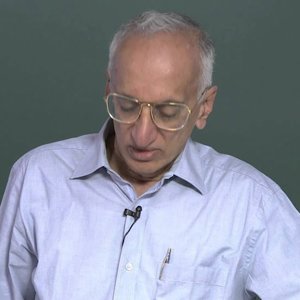
Chemical Engineering Thermodynamics by Prof. M.S. Ananth (NPTEL):- Lecture 01: Thermodynamics and the Chemical Industry
Copyright strictly reserved to Prof Prof. M.S. Ananth and NPTEL, Govt of India. Duplication prohibited. Lectures: http://www.nptel.ac.in/courses/103106070/ Syllabus: http://www.nptel.ac.in/syllabus/syllabus.php?subjectId=103106070- Wrichik Basu
- Media item
- chemical engineering nptel thermodaynamics
- Comments: 0
- Category: Engineering
-
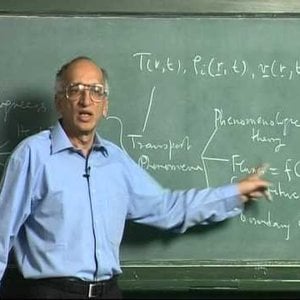
Chemical Engineering Thermodynamics by Prof. M.S. Ananth (NPTEL):- Lecture 02: James Prescot Joule and the first law
Copyright strictly reserved to Prof Prof. M.S. Ananth and NPTEL, Govt of India. Duplication prohibited. Lectures: http://www.nptel.ac.in/courses/103106070/ Syllabus: http://www.nptel.ac.in/syllabus/syllabus.php?subjectId=103106070- Wrichik Basu
- Media item
- chemical engineering nptel thermodaynamics
- Comments: 0
- Category: Engineering
-
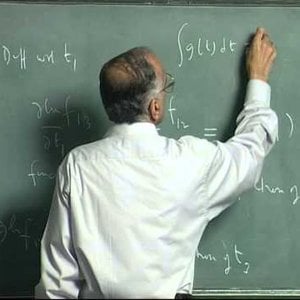
Chemical Engineering Thermodynamics by Prof. M.S. Ananth (NPTEL):- Lecture 03: Sadi Carnot and the second law
Copyright strictly reserved to Prof Prof. M.S. Ananth and NPTEL, Govt of India. Duplication prohibited. Lectures: http://www.nptel.ac.in/courses/103106070/ Syllabus: http://www.nptel.ac.in/syllabus/syllabus.php?subjectId=103106070- Wrichik Basu
- Media item
- chemical engineering nptel thermodaynamics
- Comments: 0
- Category: Engineering
-
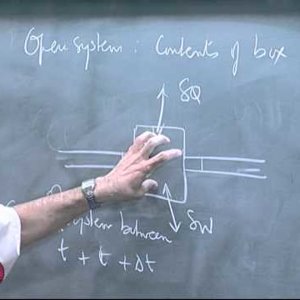
Chemical Engineering Thermodynamics by Prof. M.S. Ananth (NPTEL):- Lecture 04: Equilibrium and Extrema in work
Copyright strictly reserved to Prof Prof. M.S. Ananth and NPTEL, Govt of India. Duplication prohibited. Lectures: http://www.nptel.ac.in/courses/103106070/ Syllabus: http://www.nptel.ac.in/syllabus/syllabus.php?subjectId=103106070- Wrichik Basu
- Media item
- chemical engineering nptel thermodaynamics
- Comments: 0
- Category: Engineering
-
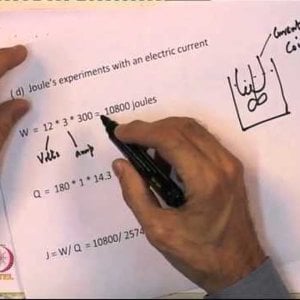
Chemical Engineering Thermodynamics by Prof. M.S. Ananth (NPTEL):- Lecture 05: Illustrative Calculations I
Copyright strictly reserved to Prof Prof. M.S. Ananth and NPTEL, Govt of India. Duplication prohibited. Lectures: http://www.nptel.ac.in/courses/103106070/ Syllabus: http://www.nptel.ac.in/syllabus/syllabus.php?subjectId=103106070- Wrichik Basu
- Media item
- chemical engineering nptel thermodaynamics
- Comments: 0
- Category: Engineering
-
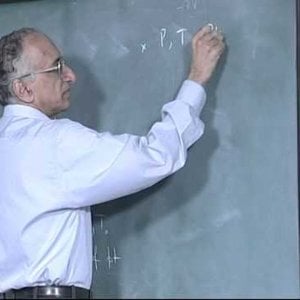
Chemical Engineering Thermodynamics by Prof. M.S. Ananth (NPTEL):- Lecture 06: Properties of pure substances
Copyright strictly reserved to Prof Prof. M.S. Ananth and NPTEL, Govt of India. Duplication prohibited. Lectures: http://www.nptel.ac.in/courses/103106070/ Syllabus: http://www.nptel.ac.in/syllabus/syllabus.php?subjectId=103106070- Wrichik Basu
- Media item
- chemical engineering nptel thermodaynamics
- Comments: 0
- Category: Engineering
-
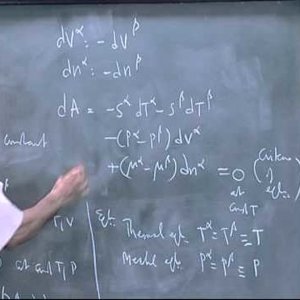
Chemical Engineering Thermodynamics by Prof. M.S. Ananth (NPTEL):- Lecture 07: The p-h chart
Copyright strictly reserved to Prof Prof. M.S. Ananth and NPTEL, Govt of India. Duplication prohibited. Lectures: http://www.nptel.ac.in/courses/103106070/ Syllabus: http://www.nptel.ac.in/syllabus/syllabus.php?subjectId=103106070- Wrichik Basu
- Media item
- chemical engineering nptel thermodaynamics
- Comments: 0
- Category: Engineering
-
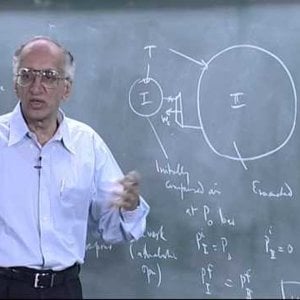
Chemical Engineering Thermodynamics by Prof. M.S. Ananth (NPTEL):- Lecture 08: Work calculation
Copyright strictly reserved to Prof Prof. M.S. Ananth and NPTEL, Govt of India. Duplication prohibited. Lectures: http://www.nptel.ac.in/courses/103106070/ Syllabus: http://www.nptel.ac.in/syllabus/syllabus.php?subjectId=103106070- Wrichik Basu
- Media item
- chemical engineering nptel thermodaynamics
- Comments: 0
- Category: Engineering
-
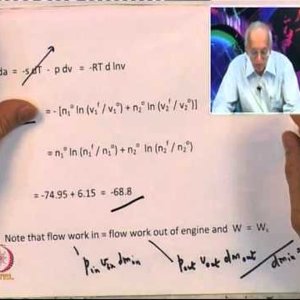
Chemical Engineering Thermodynamics by Prof. M.S. Ananth (NPTEL):- Lecture 09: Illustrative Calculations II
Copyright strictly reserved to Prof Prof. M.S. Ananth and NPTEL, Govt of India. Duplication prohibited. Lectures: http://www.nptel.ac.in/courses/103106070/ Syllabus: http://www.nptel.ac.in/syllabus/syllabus.php?subjectId=103106070- Wrichik Basu
- Media item
- chemical engineering nptel thermodaynamics
- Comments: 0
- Category: Engineering
-
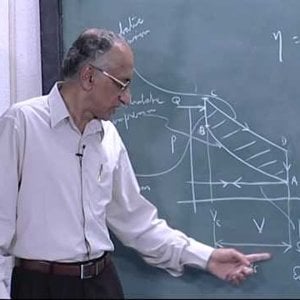
Chemical Engineering Thermodynamics by Prof. M.S. Ananth (NPTEL):- Lecture 10: Heat-Work Interconversion Devices
Copyright strictly reserved to Prof Prof. M.S. Ananth and NPTEL, Govt of India. Duplication prohibited. Lectures: http://www.nptel.ac.in/courses/103106070/ Syllabus: http://www.nptel.ac.in/syllabus/syllabus.php?subjectId=103106070- Wrichik Basu
- Media item
- chemical engineering nptel thermodaynamics
- Comments: 0
- Category: Engineering
-

Chemical Engineering Thermodynamics by Prof. M.S. Ananth (NPTEL):- Lecture 11: Refrigeration/ Thermodynamics of mixtures
Copyright strictly reserved to Prof Prof. M.S. Ananth and NPTEL, Govt of India. Duplication prohibited. Lectures: http://www.nptel.ac.in/courses/103106070/ Syllabus: http://www.nptel.ac.in/syllabus/syllabus.php?subjectId=103106070- Wrichik Basu
- Media item
- chemical engineering nptel thermodaynamics
- Comments: 0
- Category: Engineering
-
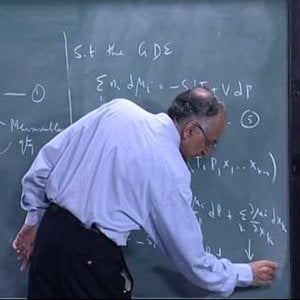
Chemical Engineering Thermodynamics by Prof. M.S. Ananth (NPTEL):- Lecture 12: The Gibbs Duhem equation
Copyright strictly reserved to Prof Prof. M.S. Ananth and NPTEL, Govt of India. Duplication prohibited. Lectures: http://www.nptel.ac.in/courses/103106070/ Syllabus: http://www.nptel.ac.in/syllabus/syllabus.php?subjectId=103106070- Wrichik Basu
- Media item
- chemical engineering nptel thermodaynamics
- Comments: 0
- Category: Engineering
-
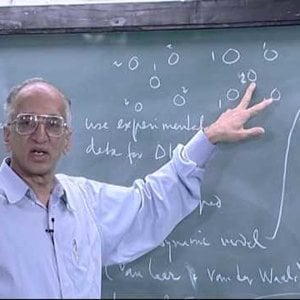
Chemical Engineering Thermodynamics by Prof. M.S. Ananth (NPTEL):- Lecture 13: Models for Excess Gibbs Free Energy
Copyright strictly reserved to Prof Prof. M.S. Ananth and NPTEL, Govt of India. Duplication prohibited. Lectures: http://www.nptel.ac.in/courses/103106070/ Syllabus: http://www.nptel.ac.in/syllabus/syllabus.php?subjectId=103106070- Wrichik Basu
- Media item
- chemical engineering nptel thermodaynamics
- Comments: 0
- Category: Engineering
-
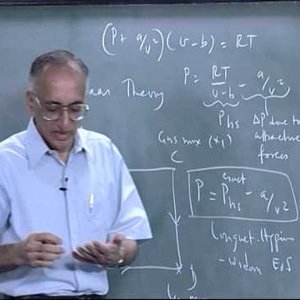
Chemical Engineering Thermodynamics by Prof. M.S. Ananth (NPTEL):- Lecture 14: Van Laar model
Copyright strictly reserved to Prof Prof. M.S. Ananth and NPTEL, Govt of India. Duplication prohibited. Lectures: http://www.nptel.ac.in/courses/103106070/ Syllabus: http://www.nptel.ac.in/syllabus/syllabus.php?subjectId=103106070- Wrichik Basu
- Media item
- chemical engineering nptel thermodaynamics
- Comments: 0
- Category: Engineering
-
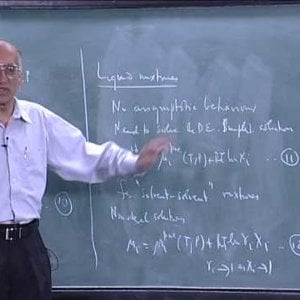
Chemical Engineering Thermodynamics by Prof. M.S. Ananth (NPTEL):- Lecture 15: Gaseous and liquid mixtures
Copyright strictly reserved to Prof Prof. M.S. Ananth and NPTEL, Govt of India. Duplication prohibited. Lectures: http://www.nptel.ac.in/courses/103106070/ Syllabus: http://www.nptel.ac.in/syllabus/syllabus.php?subjectId=103106070- Wrichik Basu
- Media item
- chemical engineering nptel thermodaynamics
- Comments: 0
- Category: Engineering
-

Chemical Engineering Thermodynamics by Prof. M.S. Ananth (NPTEL):- Lecture 16: Separation Work/ Equations of state
Copyright strictly reserved to Prof Prof. M.S. Ananth and NPTEL, Govt of India. Duplication prohibited. Lectures: http://www.nptel.ac.in/courses/103106070/ Syllabus: http://www.nptel.ac.in/syllabus/syllabus.php?subjectId=103106070- Wrichik Basu
- Media item
- chemical engineering nptel thermodaynamics
- Comments: 0
- Category: Engineering
-

Chemical Engineering Thermodynamics by Prof. M.S. Ananth (NPTEL):- Lecture 17: Chemical potentials in gas and condensed phases
Copyright strictly reserved to Prof Prof. M.S. Ananth and NPTEL, Govt of India. Duplication prohibited. Lectures: http://www.nptel.ac.in/courses/103106070/ Syllabus: http://www.nptel.ac.in/syllabus/syllabus.php?subjectId=103106070- Wrichik Basu
- Media item
- chemical engineering nptel thermodaynamics
- Comments: 0
- Category: Engineering
-

Chemical Engineering Thermodynamics by Prof. M.S. Ananth (NPTEL):- Lecture 18: Vapour Liquid Equilibria I
Copyright strictly reserved to Prof Prof. M.S. Ananth and NPTEL, Govt of India. Duplication prohibited. Lectures: http://www.nptel.ac.in/courses/103106070/ Syllabus: http://www.nptel.ac.in/syllabus/syllabus.php?subjectId=103106070- Wrichik Basu
- Media item
- chemical engineering nptel thermodaynamics
- Comments: 0
- Category: Engineering
-

Chemical Engineering Thermodynamics by Prof. M.S. Ananth (NPTEL):- Lecture 19: Vapour Liquid Equilibria II
Copyright strictly reserved to Prof Prof. M.S. Ananth and NPTEL, Govt of India. Duplication prohibited. Lectures: http://www.nptel.ac.in/courses/103106070/ Syllabus: http://www.nptel.ac.in/syllabus/syllabus.php?subjectId=103106070- Wrichik Basu
- Media item
- chemical engineering nptel thermodaynamics
- Comments: 0
- Category: Engineering
-

Chemical Engineering Thermodynamics by Prof. M.S. Ananth (NPTEL):- Lecture 20: Solvent-Solvent mixtures
Copyright strictly reserved to Prof Prof. M.S. Ananth and NPTEL, Govt of India. Duplication prohibited. Lectures: http://www.nptel.ac.in/courses/103106070/ Syllabus: http://www.nptel.ac.in/syllabus/syllabus.php?subjectId=103106070- Wrichik Basu
- Media item
- chemical engineering nptel thermodaynamics
- Comments: 0
- Category: Engineering
-

Chemical Engineering Thermodynamics by Prof. M.S. Ananth (NPTEL):- Lecture 21: Solvent-solute mixtures
Copyright strictly reserved to Prof Prof. M.S. Ananth and NPTEL, Govt of India. Duplication prohibited. Lectures: http://www.nptel.ac.in/courses/103106070/ Syllabus: http://www.nptel.ac.in/syllabus/syllabus.php?subjectId=103106070- Wrichik Basu
- Media item
- chemical engineering nptel thermodaynamics
- Comments: 0
- Category: Engineering